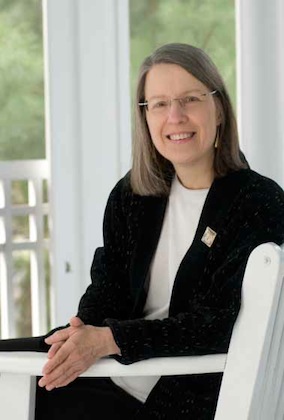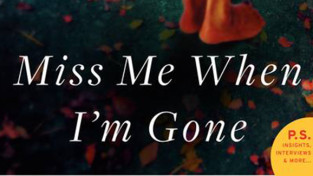A Closer Look: Caring Full Circle
 Joanna Lillian Brown ’73 hopes that you will buy her book before you really need it.
Joanna Lillian Brown ’73 hopes that you will buy her book before you really need it.
Caring for Dying Loved Ones: A Helpful Guide for Families and Friends is the result of nineteen years of caregiving for relatives and friends. In it, Brown shares the wisdom and a host of resources she has picked up along the way.
Americans are more death-denying than the rest of the world, Brown, director of alumni relations at Holyoke Community College, points out. Most of us have moved off the farm and no longer see animals being born or dying. Family members have moved in every direction, and most of us aren’t around to see our grandparents die.
The “medicalization” of death hasn’t helped, either. “People died at home before,” she points out. Today, “Many people die in the hospital or in a skilled-nursing facility.” So it makes sense that a lot of people fear death and that families wait until a crisis arises to handle the overwhelming number of details that end-of-life caregiving involves.
Brown’s first experience caring for someone nearing the end of life was with her grandmother. Anxious about what to expect, she tried to locate someone who had been with a person when they had died, but couldn’t find a soul.
As it turned out, her grandmother’s passing was a positive and spiritual experience. She learned it doesn’t take a miracle or years of experience to usher a person through their last days. But Brown wishes she had been better prepared for all of the tasks and responsibilities, which her book addresses.
As a potential caregiver, understanding how much you are willing to do for someone, and what you can live with as you reorganize your work and everyday life, is key, she says.
Brown has chapters that address at-home care, assisted living, and skilled-nursing facilities. She comes down firmly on the side of caring for a person at home whenever possible. But if she’s learned nothing else, it’s that “quality at the end of life depends on time spent with your loved one,” no matter where that is.
Brown also summarizes the financial costs of different kinds of care, offers a “My Wishes” survey to help people express how they want to be treated at the end of life, and describes what might happen in the final minutes of a person’s life.
She makes no bones about the fact that caring for someone who is dying is complicated. For a reader not familiar with the process, the details can be a bit dizzying. “This is why it’s important to get this book before you need it,” she says.
There isn’t a one-size-fits-all approach to caring for someone who is dying. Some people will be better at it than others. But the beauty of caregiving at any stage of life is the chance it offers all who are involved to give and receive an extraordinary gift.
“I didn’t want to have children,” Brown said. But just like a new mother who gives herself over to the needs of her young children, Brown was willing to do the same for her aging family members. “Life provides for caring full circle,” she says. “I hope to give people the opportunity to look at all the options.”
—By Mieke Bomann
This article appeared in the winter 2011 issue of the Alumnae Quarterly.
March 26, 2012









